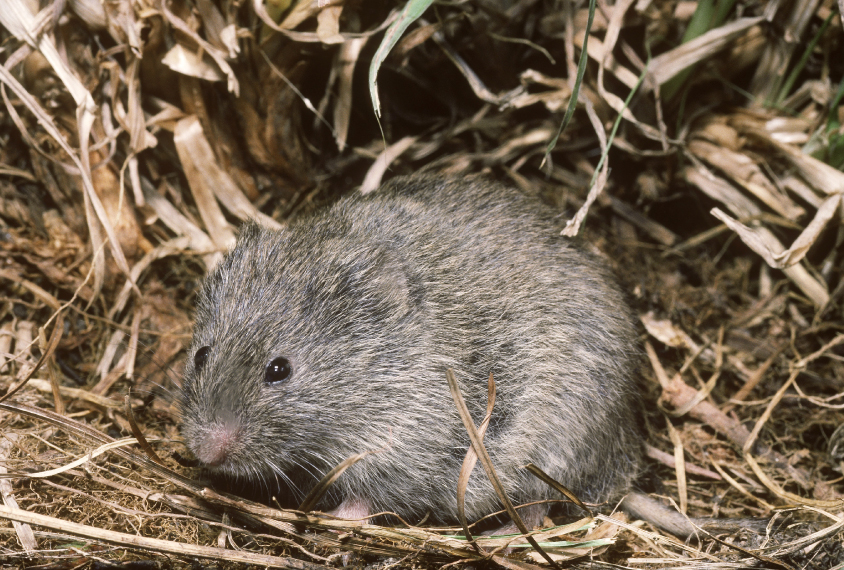
© Tom McHugh / Science Source
THIS ARTICLE IS MORE THAN FIVE YEARS OLD
This article is more than five years old. Autism research — and science in general — is constantly evolving, so older articles may contain information or theories that have been reevaluated since their original publication date.
Prairie vole pups exposed to the antidepressant fluoxetine in the womb show autism-like behaviors and lose some brain receptors for oxytocin and the related hormone vasopressin. The unpublished findings, reported this week at the 2015 Society for Neuroscience annual meeting in Chicago, suggest that interplay between serotonin and the two hormone systems can affect behavior.
Some pregnant women take fluoxetine (commonly marketed as Prozac) during pregnancy to treat anxiety and depression. But prenatal exposure to the drug may up autism risk, according to several studies. Selective serotonin reuptake inhibitors (SSRIs) such as Prozac boost the chemical messenger serotonin.
“Exposure to SSRIs could be changing the neurobiology of the child,” says Rebecca Larke, a doctoral candidate in Karen Bales’ lab at the University of California, Davis, who presented the results.
In a new study, Larke and her colleagues explored the effects of prenatal and early-life fluoxetine exposure in prairie voles. These animals are highly social and form strong attachments to other voles, a trait that has been attributed to the presence of high levels of the oxytocin receptor.
The researchers injected pregnant prairie voles with either fluoxetine or saline daily throughout their pregnancies until their pups were born and weaned. They then administered a series of behavioral tests to some of the pups when they were adolescents and to the others when they were adults.
Receding receptors:
Larke and her team found that the adult voles exposed to fluoxetine show anxiety-like behaviors: They avoid the open edges of a maze elevated off the ground. They also choose to be alone over interacting with a former cage-mate or investigating an unfamiliar vole. (The voles that received prenatal saline did not show an obvious preference among these options.) This pattern hints at social avoidance, reminiscent of a behavior associated with autism.
The researchers then looked at the density of brain receptors for oxytocin and vasopressin, both of which interact with serotonin, in certain regions of the brain. Both hormones influence social behavior and have been linked to autism. “Changes to the oxytocin system could underlie changes in social behavior,” says Larke.
Adult voles exposed to fluoxetine have fewer oxytocin receptors in the central portion of the amygdala — the almond-shaped emotion hub — than controls do, and fewer vasopressin receptors in the more medial portion. This finding is in line with the heightened anxiety and social impairment seen in the voles.
Larke also peeked in the nucleus accumbens, which mediates social reward, where oxytocin receptors typically sit. The adolescent fluoxetine-exposed voles show less receptor density in the center of this region than do controls.
Exactly how these findings track with autism risk is difficult to parse. For example, exposure to fluoxetine could by itself trigger the behavioral changes in the voles, Larke says. But it’s probably more likely that changes are driven by a complex interchange between serotonin and the two hormone systems, she says.
The researchers aim to refine this understanding by looking at oxytocin and vasopressin receptor densities in the postmortem brains of people with autism and controls.
For more reports from the 2015 Society for Neuroscience annual meeting, please click here.
By joining the discussion, you agree to our privacy policy.